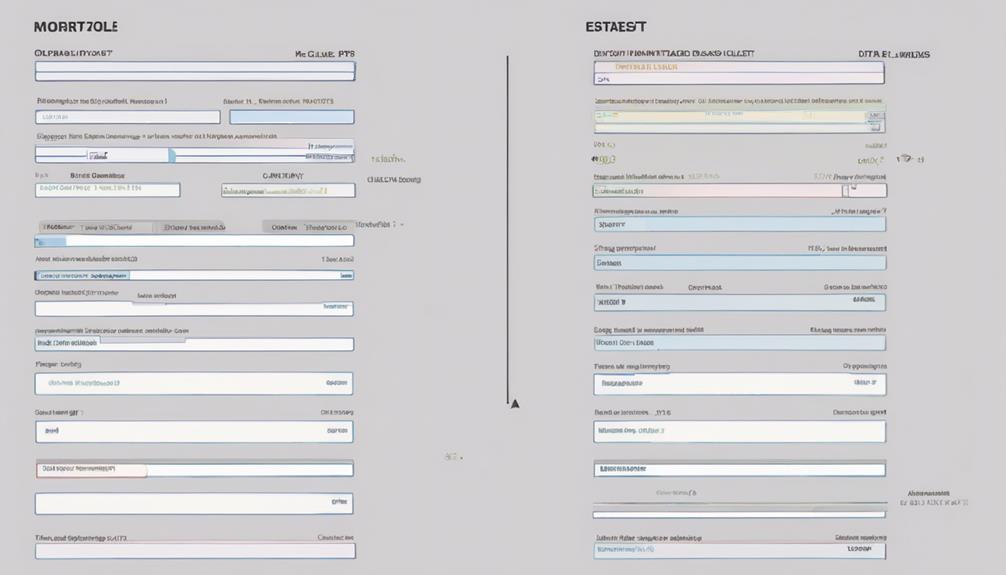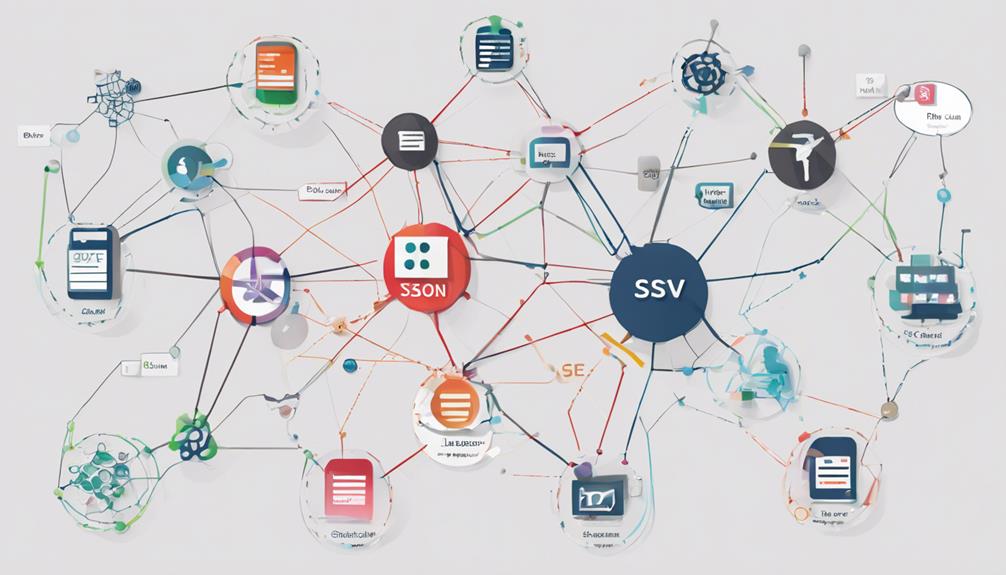Did you know that over 80% of data professionals consider data formatting a crucial step in database management? From converting data formats to visualizing insights, database data formatting services encompass a wide array of essential tasks. But what specific services are included in database data formatting process, and how do they contribute to enhancing the quality and usability of your data? Let’s explore the key components that make up database data formatting and delve into their significance in ensuring accurate and efficient data management.
Data Conversion
When it comes to database data formatting, one of the crucial services included is Data Conversion. Data conversion involves the process of transforming data from one format to another, ensuring compatibility and usability across different systems. This service plays a vital role in data migration, where existing data needs to be transferred to a new system or platform. By converting data into a standardized format, such as from CSV to XML or JSON, the information can be seamlessly integrated into the target system.
Additionally, data conversion is essential for data aggregation purposes. When collecting data from multiple sources or databases, it is common for the information to be in varied formats. Through data conversion, these disparate data formats can be unified into a consistent structure, enabling efficient analysis and reporting. This process ensures that all data points are correctly aligned and can be effectively utilized for decision-making purposes. Overall, data conversion is a critical component in database data formatting, facilitating smooth data migration and enabling comprehensive data aggregation.
Data Transformation
Now, let’s address the critical aspects of data transformation in the realm of database data formatting. Data normalization techniques play a pivotal role in ensuring data consistency and reducing redundancy. Additionally, schema mapping strategies are essential for aligning data structures across different systems and databases.
Data Normalization Techniques
To effectively manage and optimize the structure and performance of your database, applying data normalization techniques is crucial. Data normalization involves organizing data in a database efficiently, reducing redundancy, and improving data integrity. By eliminating data anomalies and inconsistencies, normalization ensures that data is structured logically for efficient querying and maintenance.
Data normalization techniques include breaking down data into smaller, manageable parts and organizing them into separate tables. This process helps reduce data redundancy and minimizes the risk of inconsistencies. Additionally, normalization minimizes data duplication and ensures that each piece of information is stored in only one place in the database.
When considering data denormalization strategies, it’s essential to weigh the trade-offs between normalized and denormalized data structures. While denormalization can improve query performance by reducing the need for joins, it can also lead to data duplication and potential inconsistencies.
Data aggregation techniques play a vital role in summarizing and condensing large datasets for analysis and reporting purposes. By aggregating data, you can extract key insights and trends while optimizing query performance.
Schema Mapping Strategies
Utilizing schema mapping strategies, also known as data transformation, is essential for aligning disparate data sources and formats to a unified schema. Schema optimization plays a crucial role in this process, ensuring that the schema is structured in the most efficient way possible. By employing schema mapping strategies, you can map data fields from different sources to corresponding fields in the target schema, facilitating seamless data migration.
Data migration is a key component of schema mapping strategies, involving the movement of data from one system to another while maintaining data integrity and consistency. Through effective schema mapping, you can transform data from its original format to fit the target schema, enabling smooth data migration processes. This ensures that data is accurately transferred and aligned with the new schema, avoiding data loss or corruption.
Data Cleaning
When cleaning data, you tackle tasks like removing duplicate entries, standardizing data formats, and correcting errors. These processes help ensure the accuracy and consistency of the database information. By addressing these points, you enhance the overall quality and usability of the data.
Removing Duplicate Entries
Among the various essential tasks involved in database data formatting is the process of removing duplicate entries. Data deduplication techniques play a crucial role in ensuring data accuracy and consistency. Identifying duplicate records is the first step in this process, which involves comparing entries across fields to pinpoint identical or highly similar data points. Once duplicates are identified, various methods can be employed to eliminate them and streamline the database.
Common data deduplication techniques include rule-based matching, fuzzy matching algorithms, and automated merging processes. Rule-based matching involves setting specific criteria to identify duplicates based on predefined rules. Fuzzy matching algorithms use similarity metrics to compare records and identify potential matches even in cases of slight variations. Automated merging processes streamline the removal of duplicates by consolidating information from duplicate records into a single, accurate entry.
Standardizing Data Formats
To ensure the efficiency and reliability of your database, one crucial aspect of data formatting is standardizing data formats, also known as data cleaning. Data standardization involves establishing uniform formats for data fields within the database to ensure data consistency. By standardizing data formats, you eliminate variations in how data is entered, making it easier to search, analyze, and retrieve information accurately.
Data consistency is vital for maintaining the integrity of your database. Inconsistent data formats can lead to errors in reporting, analysis, and decision-making processes. Standardizing data formats ensures that all data is structured in a uniform manner, reducing the risk of discrepancies and enhancing data quality.
Implementing data standardization practices involves creating guidelines for how data should be formatted and enforcing these standards across all entries. This process may involve converting data into a common format, such as date formats or numerical representations, to establish a cohesive structure. By prioritizing data consistency through standardization, you can optimize the usability and reliability of your database.
Correcting Data Errors
Standardizing data formats is a key step in maintaining database integrity. When it comes to correcting data errors, data cleaning plays a crucial role in ensuring data accuracy validation and overall data quality assurance. Here are some key aspects to consider:
- Identifying inconsistencies: The first step in data cleaning involves identifying discrepancies or errors within the data set.
- Removing duplicates: Eliminating duplicate entries is essential for maintaining accurate and reliable data.
- Standardizing formats: Ensuring that data is consistent in terms of formatting helps improve data quality and accessibility.
- Validating data: Performing thorough data validation checks helps in identifying and rectifying any inaccuracies present in the database.
Data Integration
Data integration in database data formatting is a crucial process that involves combining and harmonizing data from various sources into a unified format. To achieve this, organizations employ data migration strategies to transfer data between systems, ensuring a smooth transition. Data modeling techniques are utilized to design the structure of the integrated database, aligning it with the business requirements and goals.
Furthermore, data synchronization methods are implemented to keep the integrated data up to date across all systems, enabling real-time access and consistency. This ensures that changes made to the data in one system are reflected in all interconnected systems promptly.
Data quality assurance plays a significant role in data integration by ensuring that the combined data is accurate, complete, and consistent. Through various validation checks and error handling mechanisms, data integrity is maintained throughout the integration process, enhancing the reliability and usability of the integrated database.
Data Validation
Ensuring the accuracy and reliability of data is a critical aspect of database management. Data validation plays a vital role in maintaining data quality and integrity within a database system.
- Validation Rules: Establishing validation rules ensures that data entered into the database meets specific criteria, enhancing data quality.
- Error Detection: Data validation helps in detecting errors such as missing information or incorrect data types, thereby maintaining data integrity.
- Consistency Checks: Conducting consistency checks ensures that data remains consistent across the database, preventing discrepancies and enhancing data quality.
- Data Cleaning: Data validation often involves data cleaning processes to rectify inconsistencies and inaccuracies, improving data quality and integrity.
Data Visualization
To effectively communicate complex data insights and patterns, data visualization serves as a powerful tool within database management. By utilizing interactive dashboards, you can present data in a visually appealing and easy-to-understand format. These dashboards allow for real-time updates and interactive features, enabling users to explore data dynamically.
Data visualization plays a crucial role in data analysis, as it helps in identifying trends, outliers, and correlations that may not be apparent from raw data. Through graphical representations like charts, graphs, and heat maps, you can quickly grasp the significance of the information stored in your database.
Interactive dashboards enhance the data visualization process by providing users with the ability to customize views, filter data, and drill down into specific details. This interactivity promotes a deeper understanding of the data, facilitating more informed decision-making processes within database management.
Data Mapping
With data mapping, you establish a structured method for associating data elements from one source to another, facilitating seamless data integration and interoperability. Data mapping involves matching fields from a source to a target system, ensuring accurate data transformation and transfer. To effectively manage data mapping, consider the following:
- Data Mapping Challenges: Address issues like data inconsistency, varying formats, and complex transformations that can hinder the mapping process.
- Data Mapping Best Practices: Follow standards such as documenting mappings, validating data, and prioritizing data quality to enhance the efficiency and accuracy of mapping efforts.
- Data Mapping Tools: Utilize tools like ETL (Extract, Transform, Load) software, mapping software, and data integration platforms to streamline the mapping process.
- Data Mapping Techniques: Explore techniques like manual mapping, automated mapping, and semantic mapping to determine the most suitable approach for your data integration needs. By navigating data mapping challenges and implementing best practices alongside appropriate tools and techniques, you can optimize data mapping processes effectively.
Frequently Asked Questions
How Can Database Data Formatting Improve Data Security?
To enhance data security with database data formatting, employ data encryption and data masking. These techniques safeguard sensitive information by encoding data and concealing details, preventing unauthorized access and minimizing the risk of breaches.
What Are the Common Challenges in Database Data Formatting?
To ensure data accuracy and consistency in database data formatting, you should address challenges like data normalization, validation errors, and duplicate entries. Implementing stringent data validation rules and regular audits can help mitigate these issues effectively.
Is Database Data Formatting Compatible With All Operating Systems?
Operating system compatibility is crucial for database data formatting. Ensure data integrity by verifying compatibility with all operating systems. Check for potential conflicts and errors to maintain seamless functionality across different platforms.
Can Database Data Formatting Help in Reducing Data Redundancy?
Database data formatting, including data normalization and validation, aids in reducing data redundancy. By ensuring data integrity and accuracy, it streamlines information storage. Embracing these services enhances efficiency and reliability in managing vast datasets.
Are There Any Industry-Specific Best Practices for Database Data Formatting?
In database data formatting, industry-specific best practices involve data normalization, standardization, enrichment, and cleansing. These practices ensure data consistency, accuracy, and quality across different sectors. Implementing these strategies optimizes database performance and enhances decision-making processes within organizations.



